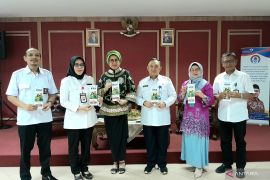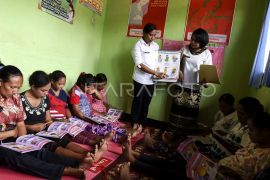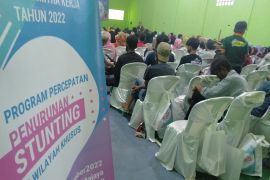"In 2022, we will strengthen three stunting measurement tools, both in terms of the method and scope of measurement, to achieve more accurate data," Head of BKKBN Hasto Wardoyo noted in a written statement received here, Friday.
He added that strengthening of the data system balanced with research and innovation was a continuation of the implementation of the fifth pillar in the national strategy to accelerate stunting reduction.
The three methods currently being strengthened are the results of the survey from the Indonesian Nutritional Status Study (SSGI), the Electronic Application - Community Based Nutrition Recording and Reporting (e-PPGBM), compiled with the Ministry of Health, and the Indonesian Demographic and Health Survey (IDHS) conducted by the National Research and Innovation Agency (BRIN) and the Statistics Indonesia (BPS).
Wardoyo said that the 2022 SSGI data has been compiled since June 8, 2022. The results will be completed at the end of next October after undergoing improvements that included increasing the number of census blocks and the number of households with children under the age of five.
The SSGI also drew attention to 12 priority provinces in the stunting reduction acceleration program. The provinces with a high prevalence rate comprised East Nusa Tenggara, 37.8 percent; West Sulawesi, 33.8 percent; Aceh, 33.2 percent; West Nusa Tenggara, 31.4 percent; Southeast Sulawesi, 30.2 percent; South Kalimantan, 30 percent; West Kalimantan, 29.8 percent; West Java, 24.5 percent; East Java, 23.5 percent; Central Java, 20.9 percent; North Sumatra, 25.8 percent; and Banten, 24.5 percent.
“The SSGI data representation for the province is quite good. However, it is necessary to review and strengthen the measurement because not all districts and cities are well-represented. It depends on how many census blocks the district has," he explained.
Wardoyo also noted that the e-PPGBM data was obtained from the weighing results at the integrated health post (posyandu). However, the result still had loopholes in the form of bias or differences in data. It must be strengthened by considering the fact that over 90 percent of children under the age of five have been recorded.
In the IDHS data, BRIN Deputy Secretary for Research and Innovation Policy Yudo Baskara added that data collection was conducted every five years to obtain population and public health information, with an estimation up to the provincial level.
The documents produced at the preparation stage of the 2022 IDHS comprise four questionnaires and 14 manuals. The sample is also planned with 2,080 census blocks, with the preparation of the sample frame using the Census Block Master Sample from the results of the 2020 Long Form Population Census (2020 SPLF).
These methods should be strengthened since they have different ways of measuring stunting cases. The three methods complement each other and are expected to reduce the stunting prevalence rate, currently still at 24.4 percent, to 14 percent in 2024.
Related news: Utilize momentum of Independence Day to improve family health: BKKBN
Related news: Convergence of relevant programs crucial for stunting reduction: VP
Translator: Hreeloita Dharma S, Resinta S
Editor: Rahmad Nasution
Copyright © ANTARA 2022












